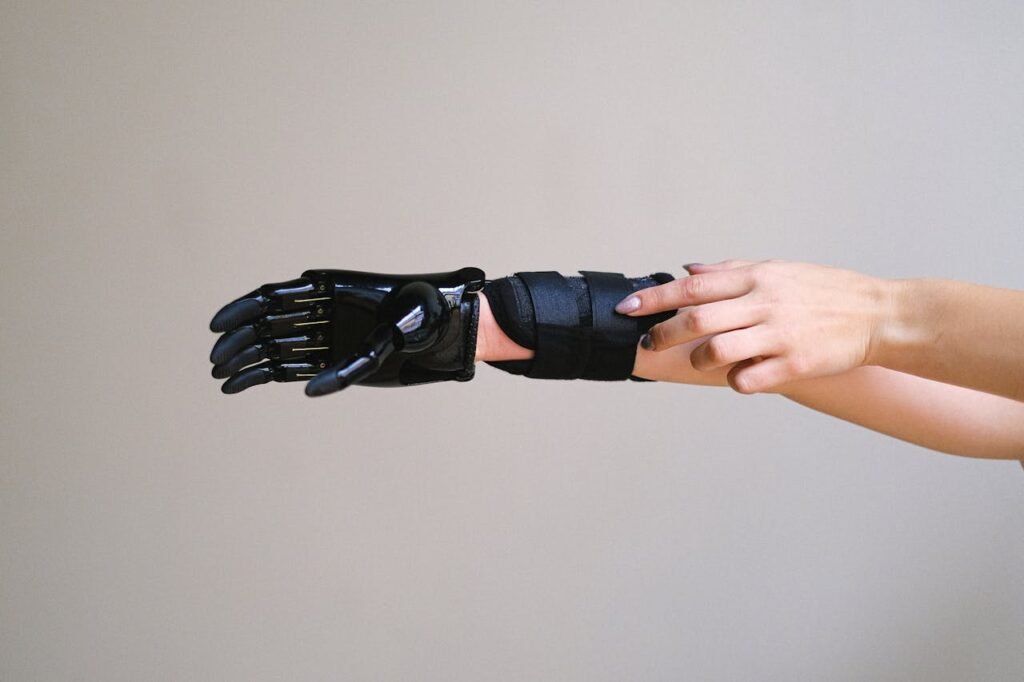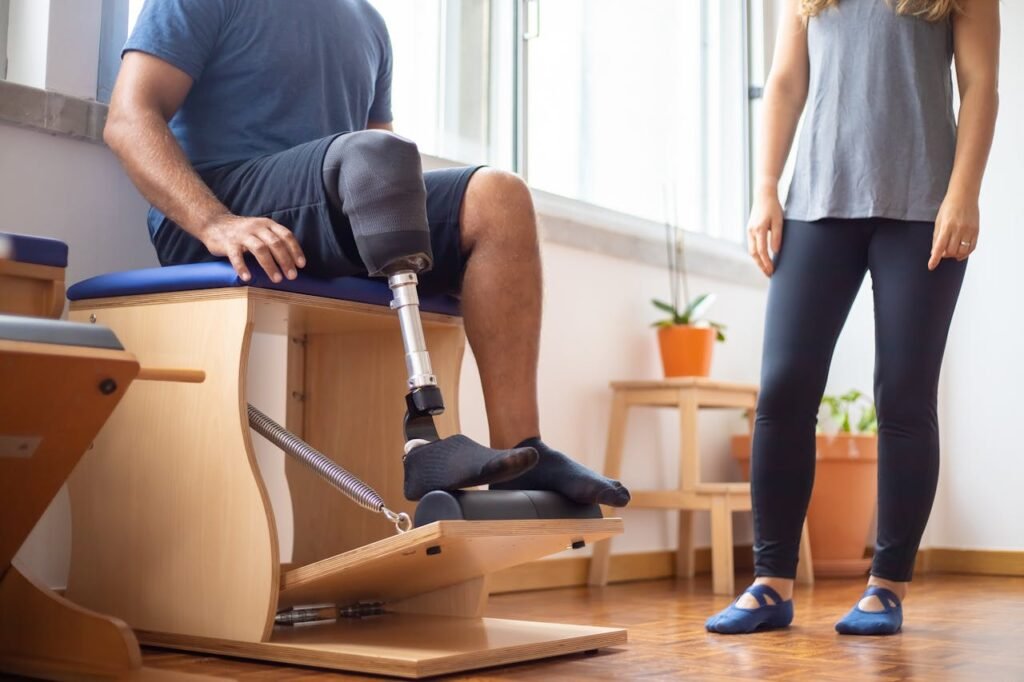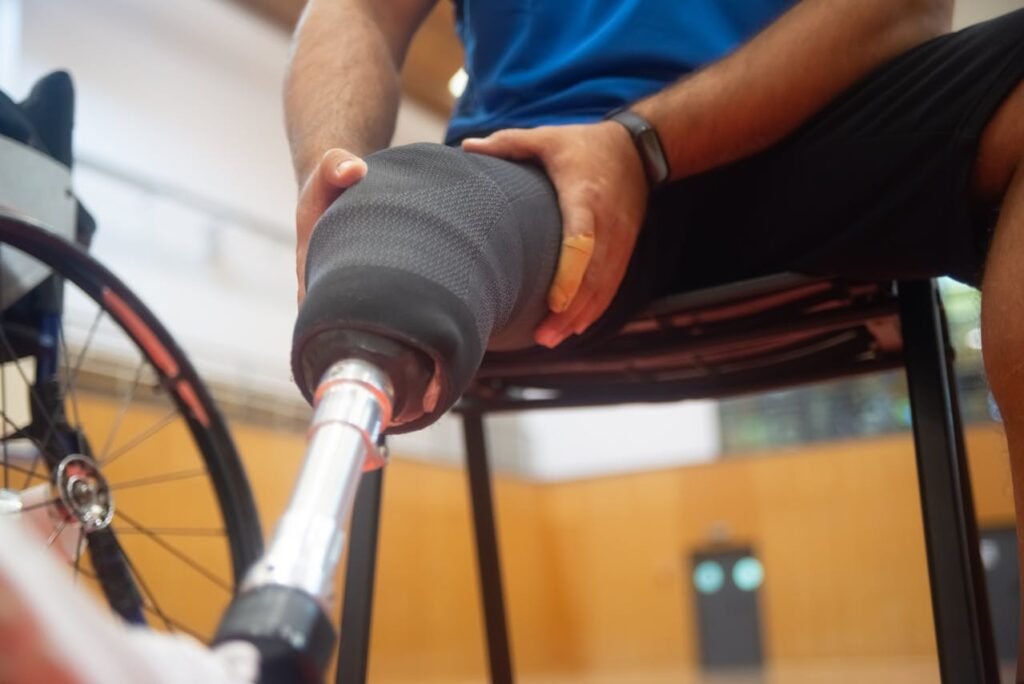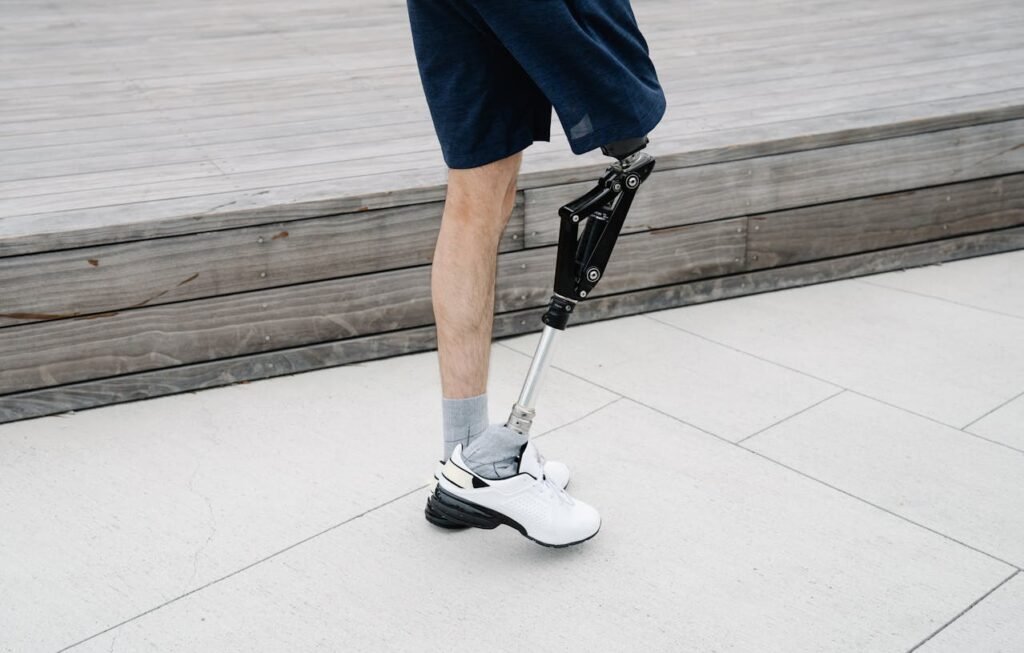A prosthetic demo should feel clear, calm, and honest. You deserve straight answers, a comfortable fit, and a device that follows your intent without fuss. If something feels off, it probably is—and that is okay. A demo is the right time to notice small issues before they become big problems. In this guide, we share what to watch for, what questions to ask on the spot, and how to ask for fixes without feeling awkward. We keep things simple and practical, so you can leave your demo with confidence. As a team that builds prosthetics every day in India, we know the signs that matter. Let’s walk through them together, step by step, so you can make a strong choice that supports your daily life, work, and joy.
Understanding the Purpose of a Prosthetic Demo
Why a Demo Matters

A demo is more than just trying on a device. It is your first real moment to feel how the prosthetic responds to you. It shows you if the hand, arm, or finger will support your lifestyle.
What You Should Expect
In a demo, you should be able to perform simple tasks. Holding a cup, turning a key, or pressing a button should feel natural, not forced. The focus is always on how close it feels to your real movement.
The Role of Comfort
Comfort is the base of everything. If the socket pinches, slips, or feels heavy during a short demo, imagine how it might feel for hours in daily life. This is a sign to pause and ask for adjustments.
First Impressions: Trust Your Gut
Listening to Your Body
Your body reacts faster than your mind. If you feel strain, stiffness, or even hesitation, do not ignore it. These are quiet red flags that must be voiced right away.
The Feel of the Fit
A prosthetic should sit snug but not tight. If it leaves marks or your skin feels sore even after a few minutes, adjustments are needed. A proper fit never causes pain.
Watching Your Energy
You should not feel drained after just a few movements. If using the prosthetic feels tiring too quickly, it may mean the device is not tuned to your strength or signal patterns.
Performance Red Flags to Notice
Delay in Response
When you send a signal to open or close, the hand should react almost instantly. A slow or uneven response can affect daily use, and this should never be ignored.
Grip Problems
If the grip feels weak or slips easily, you will not trust the prosthetic in real life. On the other hand, if the grip feels too strong and lacks control, small tasks will be hard to do.
Limited Range of Motion
If you cannot move the hand in the ways you need—like rotating, flexing, or holding objects of different sizes—it is time to ask for a change. Range matters for real-world independence.
Comfort Concerns During a Demo
Skin Pressure and Irritation
Red marks, heat, or itching should never be accepted as normal. Even during a short demo, your skin tells the truth about the socket design.
The Weight Factor
A prosthetic should never feel like a burden. If it feels heavy and makes your arm tired quickly, it may need rebalancing or a lighter design.
Adjusting Straps and Liners
Straps or liners should feel secure but gentle. If you are constantly adjusting them, something is off in the fitting or design.
Communication with the Prosthetist
Asking the Right Questions
Do not hesitate to ask how the device can be adjusted, what changes are possible, and how long they will take. Clear answers show professionalism.
Reading Their Response
If a prosthetist dismisses your discomfort or asks you to “just get used to it,” treat that as a warning. A good expert always listens and explains.
Trusting a Supportive Team
A demo is also about trust. The right provider will make you feel safe to speak up and will treat every concern as valid.
Signs in Daily Task Simulation
Trouble With Simple Actions
A good demo includes everyday tasks like picking up a bottle or holding a pen. If you find yourself struggling with these basics, it means the device needs adjustment.
Difficulty in Fine Control
Small actions, such as pressing a button or holding a coin, should feel smooth. If the prosthetic feels clumsy or overshoots your intent, this is an early red flag.
Losing Grip Unexpectedly
If the hand drops items suddenly or fails to hold steady, that shows the sensors or signals are not tuned properly to your muscles. This should be corrected before moving forward.
Technical Red Flags You Should Not Miss
Battery Performance During Demo
Even in a short trial, the battery should remain stable. If it drains unusually fast or the hand suddenly stops, ask about power management and backup options.
Signal Detection Issues
The prosthetic works by reading your muscle signals. If it misses your cues or interprets them incorrectly, it needs recalibration or a deeper check of electrode placement.
Noise or Mechanical Sounds
While some sound is natural, loud clicks, grinding, or buzzing during motion can mean mechanical issues. These should be addressed before you commit.
Emotional and Psychological Red Flags
Feeling Hesitant to Use It

A prosthetic should invite you to try more, not less. If you feel nervous every time you move, it means the device is not yet tuned to give you trust.
Stress During Use
If you are constantly worried about breaking the device or doing something wrong, then either the design is too fragile or the fitting is not secure.
Losing Confidence
A demo should give you hope, not doubt. If you walk away feeling weaker instead of stronger, something in the process has gone wrong.
Financial and Transparency Concerns
Hidden Costs
If pricing is unclear or extra charges appear after the demo, stop and ask for a full breakdown. A transparent provider always shares total costs up front.
Warranty and Service Gaps
A demo should also include clear details about warranty, servicing, and future support. If these are not explained, it is a red flag.
Unrealistic Promises
Be careful of claims that sound too perfect. If a provider says the prosthetic can do everything without limits, ask for proof or a real demonstration.
When to Speak Up Immediately
Pain That Does Not Ease
Discomfort in the first minute can be adjusted. But if pain continues even after small fixes, speak up right away. Pain should never be part of your journey.
Unclear Training
If the team does not guide you through using the device step by step, it shows a lack of care. Training is essential for confidence.
Lack of Follow-Up Plans
Before you leave, there should be a plan for future adjustments. If no follow-up is offered, ask for one or consider another provider.
How to Ask for Adjustments with Confidence
Speaking Up Without Hesitation
Many people feel shy during a prosthetic demo. They fear that pointing out problems may upset the expert or delay the process. But remember, this device will become a part of your body. If something feels wrong now, it will feel worse later. Speak openly. Say exactly what is bothering you—whether it is weight, grip, comfort, or response speed.
Using Simple Words to Explain
You do not need technical language. Use your own words. For example, say “The hand feels heavy after holding this cup,” or “It does not respond quickly when I try to open it.” This helps the prosthetist understand the exact problem and work on it.
Requesting a Demonstration Again
If you are not sure whether an adjustment has helped, ask to try the same task again. Repeating the motion will show whether the issue is solved or if more changes are needed. A caring provider will always allow you to test again until you feel satisfied.
Common Fixes During a Demo
Adjusting the Socket Fit
One of the most common issues is the socket. If it feels tight or loose, the prosthetist can adjust padding, change liners, or refine the shape. A small change here can bring huge relief.
Fine-Tuning the Grip Strength
If the hand grips too strongly or too weakly, settings can usually be changed. Do not accept a grip that feels unsafe. Everyday life depends on being able to trust your prosthetic to hold just enough without dropping or crushing objects.
Improving Signal Sensitivity
Sometimes the device struggles to pick up your muscle signals. This can often be improved by repositioning sensors, adjusting calibration, or training you on how to send clearer signals. Even short practice sessions during the demo can make a difference.
Preparing for a Second Trial
Taking Notes After the First Demo
Right after your first trial, write down what felt good and what did not. Did you feel pressure in a certain spot? Did it slip when you tried to lift something? These notes will help during your second demo.
Setting Clear Goals for the Next Visit
Before going in again, think about what you want to achieve. Maybe you want to try cooking motions, typing on a keyboard, or lifting a small bag. Sharing these goals will help the prosthetist prepare better.
Asking for Time and Patience
Do not rush the process. It is normal to need more than one demo. A good prosthetic team will understand this and give you the time you need to feel fully confident.
Emotional Readiness and Trust
Allowing Yourself to Feel

It is okay to feel nervous, excited, or even frustrated during a demo. These emotions are natural. The important thing is to notice them and talk about them with your prosthetist. Your feelings matter as much as the physical fit.
Building Trust with the Team
You are not just testing a device—you are building a relationship with the people who will support you for years. Notice how the team treats your questions. Do they listen carefully? Do they respect your choices? This trust is as important as the technology itself.
Celebrating Small Wins
Even if the first demo does not go perfectly, notice what worked. Maybe the grip was smooth, or the weight felt lighter than expected. Celebrate these small wins. They show that you are on the right path, and with adjustments, things will improve.
Long-Term Thinking During a Demo
Looking Beyond the First Fit
The demo is not just about how the prosthetic feels today. Ask yourself—can I imagine wearing this every day? Can I see myself working, cooking, or even playing with it months from now? If the answer is not clear, you may need more adjustments.
Considering Lifestyle Needs
Think about your daily routine. Do you need to type for work, lift groceries, or hold tools? Bring these scenarios into the demo. The prosthetic should adapt to your life, not the other way around.
Planning for Future Adjustments
Your body will change over time. Muscles may grow stronger or thinner. A good prosthetic should be adjustable in the future. Ask the provider how often fittings are updated and what kind of follow-up care is offered.
The Role of Support After the Demo
Training Sessions Matter
A demo should not end when you take the prosthetic off. Ask about training. The best providers will give sessions where you learn to control the hand naturally and comfortably. This training builds your confidence step by step.
Service and Maintenance Support
Machines need care, and so does a prosthetic. Ask how often servicing is required, what costs are involved, and whether quick support is available if something breaks. Reliable aftercare is just as important as the first demo.
Community and Peer Support
Sometimes the best insights come from others who already use the device. Ask if you can meet or speak with current users. Their real-world experiences can show you what to expect and reassure you about your journey.
Real-Life Red Flags You Might Face
The Cup Test
Imagine you are asked to pick up a cup of water during the demo. You reach out, the prosthetic grabs it, but water spills because the grip is uneven. This is not just an accident—it shows the grip needs calibration. If it cannot hold a simple cup with steady pressure, it will struggle with daily life tasks like holding food or a phone.
The Pen Test
You sit down to write your name. The prosthetic holds the pen but presses too hard, tearing the paper. Or it grips too lightly, and the pen slips. Writing is not just about strength but control. If you face this, request an adjustment in grip sensitivity.
The Bag Lift
You try to lift a light bag. At first, the grip seems fine, but after a few seconds, the bag slips from your hand. This shows the sensors may not be reading your signal consistently. It also shows that the grip endurance is not yet tuned.
Situations Where People Stay Silent but Shouldn’t
Fear of Being Impolite
Many users feel they should not complain because the team is “the expert.” But you are the one who will wear the device daily. Your comfort is more important than being polite. Speak up if you notice any problem.
Thinking Pain is Normal
Some people think pain during the demo is part of the process. It is not. If you feel pinching, burning, or soreness, that is a warning. Pain means the fit is wrong and needs changes.
Accepting “You Will Get Used To It”
If you hear this line, pause. Some small adjustments require practice, but discomfort or poor performance should never be dismissed. If it feels wrong now, it will feel wrong tomorrow.
Handling Technical Red Flags
Signal Confusion
Sometimes, the prosthetic hand might close when you want it to open. This happens if electrodes pick up mixed signals. Ask the prosthetist to check placement and recalibrate. You should not feel like you are fighting your own device.
Weak Battery During Testing
If the hand suddenly slows down or shuts off during a short demo, imagine what will happen in real life. Ask how long the battery lasts in daily use, how fast it charges, and whether spare batteries are available.
Noisy Operation
If the device makes loud mechanical sounds, it may indicate friction or wear in the moving parts. While some sound is natural, too much can affect long-term durability and make public use uncomfortable.
Psychological Red Flags
Feeling Dependent Instead of Independent

A prosthetic is meant to empower you. If, after the demo, you feel like it slows you down or makes you more dependent, that is a problem. Independence should always grow with the device.
Anxiety During Use
If you are afraid the prosthetic will break with simple tasks, your trust in it is low. This fear is valid. It usually points to either poor fitting or a fragile build. Both can be fixed if you raise the concern.
Frustration Instead of Joy
The demo should leave you hopeful. If you walk away angry, frustrated, or discouraged, it may mean the team did not listen to your needs or rushed you through the process.
Practical Steps to Handle Red Flags
Pause and Ask Questions
Do not move forward if something feels wrong. Stop and ask: “Why is this happening?” “Can this be adjusted now?” “What options do I have?” Asking questions protects you from making a costly mistake.
Try Again After Adjustment
If the prosthetist makes a change, ask to repeat the task that caused the problem. This helps confirm whether the adjustment worked or if more tuning is needed.
Document What You Notice
Keep a notebook or use your phone to jot down issues during the demo. Later, this will help you remember exactly what to bring up in the follow-up session.
Red Flags in Communication
Lack of Transparency
If the team avoids your questions about cost, warranty, or technology, it is a red flag. Honest providers explain everything clearly.
Overpromising Results
If someone claims the prosthetic will give you “super strength” or “work exactly like a natural hand,” be cautious. Real prosthetics are powerful but have limits. Trust only what you see in the demo.
No Discussion of Aftercare
If nobody talks about follow-up visits, repairs, or support, that means aftercare may not be their focus. This can leave you stranded later if issues arise.
Turning Red Flags into Solutions
Asking for Customization
If you notice repeated discomfort or weak performance, ask if the device can be customized. Sometimes, a simple change in socket shape or electrode placement solves the issue.
Requesting More Training Time
If you feel clumsy, it might not be the prosthetic—it might be lack of practice. Ask for more guided training before making your decision.
Exploring Alternatives
If adjustments still do not solve the issues, ask about other models. Sometimes a mechanical option works better than a myoelectric one, depending on your lifestyle.
Case Studies of Common Red Flags
Case Study One: The Loose Socket
Ravi, a college student, went for his first prosthetic demo. At first, the hand seemed fine, but within minutes he felt the socket slipping down his arm. The prosthetist told him it was normal and that he would “get used to it.” Ravi stayed quiet. Within two weeks of use, his skin developed sores because of friction.
What Ravi should have done was simple: speak up during the demo and ask for a tighter or re-molded socket. A secure socket is the foundation of a good prosthetic. A small adjustment then would have saved him weeks of pain.
Case Study Two: The Overpowering Grip
Meena, a teacher, tried writing on a board with her new prosthetic. Each time she picked up the marker, the hand squeezed too hard and snapped the tip. The prosthetist laughed and said she needed more practice. Meena felt embarrassed and agreed.
But this was a red flag. The grip strength was too high and needed tuning. Instead of accepting the problem, Meena could have asked for calibration. Fine-tuned grip would have made teaching easier and saved her frustration.
Case Study Three: The Battery Problem
Arun, who worked in an office, tested a bionic hand that seemed perfect at first. Halfway through his demo, the hand slowed down and stopped. The prosthetist explained it was because the battery was old and would be replaced later. Arun trusted the promise and bought it.
Soon, he realized the battery drained every three hours. His work suffered. If he had asked to see a fresh, fully charged battery during the demo, he would have noticed the real performance.
Questions You Can Use During a Demo
Questions About Comfort
“Can we try adjusting the socket? It feels too tight here.”
“Why do I feel pressure on my skin after wearing it for just ten minutes?”
“Is this redness normal, or should we fix the fit?”
Questions About Performance
“Can we adjust the grip strength so I can hold objects without breaking or dropping them?”
“Why is there a delay when I try to open and close the hand?”
“Can we repeat the same test after calibration to see the change?”
Questions About Support
“What kind of training will I get after I take this home?”
“How often do I need to come back for adjustments?”
“If something breaks, how fast can it be repaired?”
Preparing Yourself for the Demo
Physical Preparation

Before the demo, make sure your arm muscles are not too tired. Rest well the night before so your signals are clear. Wear comfortable clothing that makes it easy to fit the prosthetic. Carry a water bottle, a notebook, and maybe small objects you use daily, like a key or a pen.
Mental Preparation
Go in with an open but cautious mind. Expect some learning curve but do not ignore discomfort. Remind yourself: you are testing the prosthetic, not proving yourself. If it does not feel right, the device—not you—is the one that needs adjusting.
Emotional Preparation
It is normal to feel nervous. This is a big step. Bring a friend or family member if possible. They can observe details you might miss and help you speak up. Having emotional support also makes the experience less overwhelming.
Understanding Which Red Flags Are Fixable
The Quick Fixes
Issues like grip strength, sensor sensitivity, and strap adjustments are often quick fixes. These can be done during the demo itself, and you should always request them.
The Medium Fixes
Problems with socket fitting or weight distribution may need more time. These require re-molding or balancing, which could take a few days. Still, these are fixable if the provider is committed.
The Serious Red Flags
If the prosthetic fails to detect signals consistently, drains power too fast, or causes deep pain even after adjustments, these are serious warnings. They may indicate the device is not right for you, and you should consider other models.
Building Confidence to Ask for Adjustments
Reminding Yourself of Your Rights
You are investing your trust, your money, and your daily comfort into this device. That gives you every right to demand adjustments until it feels right.
Viewing the Prosthetist as a Partner
Do not see the prosthetist as someone above you. They are your partner in this journey. A good one will welcome your feedback. If they seem irritated or dismissive, that itself is a red flag.
Knowing That Adjustments Are Normal
Every user is different. No prosthetic fits perfectly the first time. Adjustments are part of the process, not an inconvenience. The best results always come after tuning.
The Role of Repeated Testing
Testing in Different Scenarios
Do not just try the prosthetic while sitting in a chair. Walk around with it, bend down, pick up objects, and try different postures. This reveals hidden problems.
Testing for Longer Durations
If possible, ask to wear the prosthetic for at least thirty minutes during the demo. Some discomfort shows up only after continuous use, not in the first five minutes.
Testing with Real-Life Objects
Bring things from your own life. If you are a student, try holding books. If you are a cook, try lifting utensils. If you are a parent, try picking up toys. Real tasks reveal real issues.
Advanced Red Flags That Deserve Extra Attention
Red Flag: Sudden Signal Dropouts
If the prosthetic works fine one moment but suddenly stops responding, that is not normal. It shows either the sensors are unstable or the wiring has issues. Do not let this pass. Ask for a full check of the electrodes and circuits. A reliable device must never cut out during daily tasks.
Red Flag: Overheating
If you feel unusual heat from the socket or the battery, treat it as a serious concern. Prosthetics are designed to stay cool during use. Overheating can mean poor design or faulty electronics. This is something that must be addressed immediately.
Red Flag: No Flexibility for Adjustment
Sometimes, you may hear, “This model cannot be changed much.” That is a warning sign. A good prosthetic should allow fine-tuning for grip, sensitivity, and comfort. If adjustments are limited, the device may not be suited for your needs.
Negotiating with the Provider
Asking for a Transparent Breakdown
Do not be shy about asking: “Can you show me exactly what is included in the price?” A fair provider will explain the cost of the device, training, service, and future fittings. If they avoid answering, step back.
Requesting a Written Guarantee
Always ask for a written warranty and service policy. This protects you if something goes wrong later. If they hesitate to put it in writing, that shows they are not fully confident in their product.
Making Adjustments Part of the Deal
When finalizing, include a clause that says adjustments are part of the package. This ensures you will not be charged extra for fitting changes after the first few weeks of use.
Ensuring Long-Term Satisfaction
Following Up After the Demo

Do not disappear after the first trial. Schedule a follow-up visit to check progress. This is where you confirm whether the red flags you noticed have been solved.
Staying in Touch with the Team
Keep open communication with the prosthetist. If you feel discomfort even weeks later, contact them. A good team will respond quickly and help you adjust.
Being Honest About Your Needs
Never hide your struggles. If you cannot perform a certain task, speak openly. The sooner they know, the faster they can fix it.
The Emotional Journey of a Prosthetic Demo
Feeling the Weight of the Decision
A prosthetic is not just a tool. It becomes part of your body, part of your identity. Choosing one is an emotional decision. That is why red flags should never be ignored.
Turning Doubt into Strength
Every red flag is an opportunity. Instead of feeling discouraged, see it as a step toward the right fit. Each concern you raise makes your device stronger and more reliable.
Celebrating Progress
Even if the first demo is not perfect, remember: you are moving forward. Each adjustment brings you closer to independence, confidence, and a fuller life.
Practical Checklist for Your Next Demo
Before the Demo
- Rest well and wear comfortable clothes
- Carry small objects you use daily
- Bring a notebook to record your feelings
During the Demo
- Speak up about any discomfort
- Test different tasks, not just one
- Ask for repeated trials after adjustments
After the Demo
- Review your notes calmly
- Share feedback with the provider
- Plan your next session for further tuning
Conclusion
A prosthetic demo is not about impressing anyone—it is about finding the right fit for you. Every click, every grip, every small discomfort matters. If something feels wrong, do not ignore it. Ask questions. Demand adjustments. Repeat tests until you feel sure.
Your prosthetic should not just sit on your arm. It should feel like a partner—helping you write, eat, lift, and live with freedom. If red flags appear, see them not as barriers but as guides pointing you toward a better solution.
At RoboBionics, we believe no person should walk away from a demo feeling uncertain. You deserve comfort, clarity, and confidence from day one. If you ever feel unsure, we invite you to schedule a session with us. We will listen, adjust, and walk with you every step of the way.
Your independence matters. Your comfort matters. And your voice matters the most.
Schedule your demo with RoboBionics today and take the next step toward a life full of strength, dignity, and possibility.



